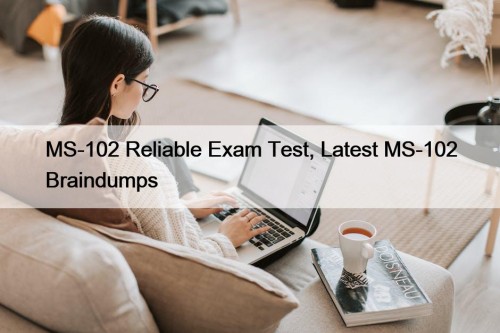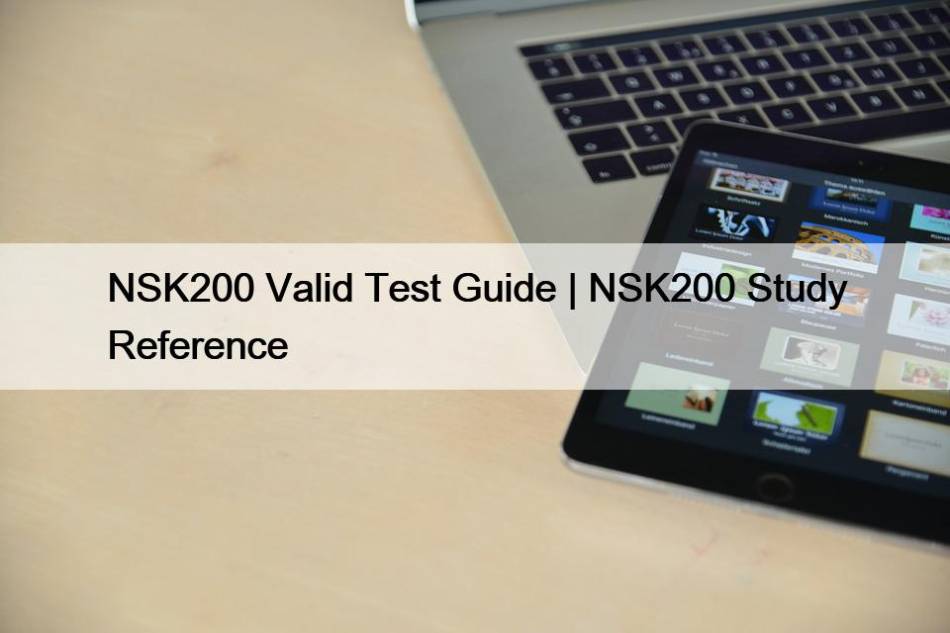Most Popular
 Exam Salesforce Salesforce-Certified-Administrator Details | Salesforce-Certified-Administrator Practice Exam Online
Exam Salesforce Salesforce-Certified-Administrator Details | Salesforce-Certified-Administrator Practice Exam Online
2025 Latest LatestCram Salesforce-Certified-Administrator PDF Dumps and Salesforce-Certified-Administrator Exam Engine ...
 Free P-SAPEA-2023 Test Questions - Accurate P-SAPEA-2023 Answers
Free P-SAPEA-2023 Test Questions - Accurate P-SAPEA-2023 Answers
BTW, DOWNLOAD part of VCEPrep P-SAPEA-2023 dumps from Cloud Storage: ...
 MS-102 Reliable Exam Test, Latest MS-102 Braindumps
MS-102 Reliable Exam Test, Latest MS-102 Braindumps
BTW, DOWNLOAD part of TestPassed MS-102 dumps from Cloud Storage: ...



NSK200 Valid Test Guide | NSK200 Study Reference

Our Netskope practice examinations provide a wonderful opportunity to pinpoint and overcome mistakes. By overcoming your mistakes before appearing in the real Netskope NSK200 test, you can avoid making mistakes in the actual NSK200 Exam. These NSK200 self-assessment exams show your results, helping you to improve your performance while tracking your progress.
Netskope NSK200 Exam Syllabus Topics:
| Topic | Details |
|---|---|
| Topic 1 |
|
| Topic 2 |
|
| Topic 3 |
|
| Topic 4 |
|
| Topic 5 |
|
NSK200 Test Braindumps: Netskope Certified Cloud Security Integrator (NCCSI) & NSK200 Exam Collection
Although a lot of products are cheap, but the quality is poor, perhaps users have the same concern for our latest NSK200 exam preparation materials. Here, we solemnly promise to users that our NSK200 exam questions error rate is zero. Everything that appears in our products has been inspected by experts. In our NSK200 practice materials, users will not even find a small error, such as spelling errors or grammatical errors. It is believed that no one is willing to buy defective products, so, the NSK200 study guide has established a strict quality control system.
Netskope Certified Cloud Security Integrator (NCCSI) Sample Questions (Q21-Q26):
NEW QUESTION # 21
Your customer implements Netskope Secure Web Gateway to secure all Web traffic. While they have created policies to block certain categories, there are many new sites available dally that are not yet categorized. The customer's users need quick access and cannot wait to put in a request to gain access requiring a policy change or have the site's category changed.
To solve this problem, which Netskope feature would provide quick, safe access to these types of sites?
- A. Netskope Cloud Firewall (CFW)
- B. Netskope Continuous Security Assessment (CSA)
- C. Netskope SaaS Security Posture Management (SSPM)
- D. Netskope Remote Browser Isolation (RBI)
Answer: D
Explanation:
Explanation
To solve the problem of providing quick, safe access to uncategorized and risky websites, the Netskope feature that the customer should use is Netskope Remote Browser Isolation (RBI). Netskope RBI is a part of the Netskope Secure Web Gateway offering that intercepts a user's browsing session to a website, acting as a proxy that fetches the content for that user and renders the content in an isolated browsing instance. The rendered content is delivered to the user's browser as a safe stream of pixels. This safely silos the end user's device and the enterprise network and systems, separating it from their browsing activity and restricting the ability of an attacker to establish control and / or breach other systems and exfiltrate data1. Netskope RBI can be easily invoked with an 'isolate' policy action within the Netskope Security Cloud for any website category or domain2. Therefore, option B is correct and the other options are incorrect. References: Remote Browser Isolation - Netskope Knowledge Portal, Netskope Remote Browser Isolation - Netskope
NEW QUESTION # 22
Your company needs to keep quarantined files that have been triggered by a DLP policy. In this scenario, which statement Is true?
- A. The files are stored In the Netskope data center assigned in the Quarantine profile.
- B. The files are stored on the administrator console PC assigned In the Quarantine profile.
- C. The files are stored In the Cloud provider assigned In the Quarantine profile.
- D. The files are stofed remotely In your data center assigned In the Quarantine profile.
Answer: A
Explanation:
Explanation
When a policy flags a file to be quarantined, that file is placed in a quarantine folder and a tombstone file is put in the original location in its place. The quarantine folder is located in the Netskope data center assigned in the Quarantine profile. The Quarantine profile is configured in Settings > Threat Protection > API-enabled Protection. The quarantined file is zipped and protected with a password to prevent users from inadvertently downloading the file. Netskope then notifies the admin specified in the profile1. Therefore, option B is correct and the other options are incorrect. References: Quarantine - Netskope Knowledge Portal, Threat Protection - Netskope Knowledge Portal
NEW QUESTION # 23
Your learn is asked to Investigate which of the Netskope DLP policies are creating the most incidents. In this scenario, which two statements are true? (Choose two.)
- A. You can create a report using Reporting or Advanced Analytics.
- B. The Skope IT Applications tab will list the top five DLP policies.
- C. You can see the top Ave DLP policies triggered using the Analyze feature
- D. The Skope IT Alerts tab will list the top five DLP policies.
Answer: A,C
Explanation:
To investigate which of the Netskope DLP policies are creating the most incidents, the following two statements are true:
* You can see the top five DLP policies triggered using the Analyze feature. The Analyze feature allows you to create custom dashboards and widgets to visualize and explore your data. You can use the DLP Policy widget to see the top five DLP policies that generated the most incidents in a given time period3.
* You can create a report using Reporting or Advanced Analytics. The Reporting feature allows you to create scheduled or ad-hoc reports based on predefined templates or custom queries. You can use the DLP Incidents by Policy template to generate a report that shows the number of incidents per DLP policy4. The Advanced Analytics feature allows you to run SQL queries on your data and export the results as CSV or JSON files. You can use the DLP_INCIDENTS table to query the data by policy name and incident count5.
The other two statements are not true because:
* The Skope IT Applications tab will not list the top five DLP policies. The Skope IT Applications tab shows the cloud app usage and risk summary for your organization. It does not show any information about DLP policies or incidents6.
* The Skope IT Alerts tab will not list the top five DLP policies. The Skope IT Alerts tab shows the alerts generated by various policies and profiles, such as DLP, threat protection, IPS, etc. It does not show the number of incidents per policy, only the number of alerts per incident7.
NEW QUESTION # 24
You want to secure Microsoft Exchange and Gmail SMTP traffic for DLP using Netskope. Which statement is true about this scenario when using the Netskope client?
- A. Enable Cloud Firewall to Inspect Inbound SMTP traffic for Microsoft Exchange and Gmail.
- B. Enable REST API v2 to Inspect inbound SMTP traffic for Microsoft Exchange and Gmail.
- C. Netskope can inspect outbound SMTP trafficfor Microsoft Exchange and Gmail.
- D. Netskope can inspect inbound and outbound SMTP traffic for Microsoft Exchange and Gmail.
Answer: C
Explanation:
Explanation
Netskope can inspect outbound SMTP traffic for Microsoft Exchange and Gmail using the Netskope client.
The Netskope client intercepts the SMTP traffic from the user's device and forwards it to the Netskope cloud for DLP scanning. The Netskope client does not inspect inbound SMTP traffic, as this is handled by the cloud email service or the MTA. Therefore, option A is correct and the other options are incorrect. References: Configure Netskope SMTP Proxy with Microsoft O365 Exchange, Configure Netskope SMTP Proxy with Gmail, SMTP DLP, Best Practices for Email Security with SMTP proxy
NEW QUESTION # 25
You are an administrator writing Netskope Real-time Protection policies and must determine proper policy ordering.
Which two statements are true in this scenario? (Choose two.)
- A. You do not need to create an "allow all" Web Access policy at the bottom.
- B. You must place DLP policies at the bottom.
- C. You must place Netskope private access malware policies in the middle.
- D. You must place high-risk block policies at the top.
Answer: A,D
Explanation:
Placing high-risk block policies at the top ensures that critical blocks are enforced first, protecting against the most severe threats. Additionally, an "allow all" Web Access policy at the bottom is not necessary, as policy defaults can handle remaining traffic not explicitly addressed by other rules.
NEW QUESTION # 26
......
All exam materials in NSK200 learning materials contain PDF, APP, and PC formats. They have the same questions and answers but with different using methods. If you like to take notes randomly according to your own habits while studying, we recommend that you use the PDF format of our NSK200 Study Guide. And besides, you can take it with you wherever you go for it is portable and takes no place. So the PDF version of our NSK200 exam questions is convenient.
NSK200 Study Reference: https://www.actualpdf.com/NSK200_exam-dumps.html
- Latest NSK200 Dumps Ebook 🎃 NSK200 New Exam Bootcamp 😋 NSK200 Latest Exam Fee 😾 Search for 【 NSK200 】 on ☀ www.lead1pass.com ️☀️ immediately to obtain a free download 🟥Latest NSK200 Test Format
- NSK200 Actual Exams 😐 Pdf NSK200 Format 🦙 NSK200 New Exam Bootcamp 🗾 Search for “ NSK200 ” and download exam materials for free through ▷ www.pdfvce.com ◁ ☕NSK200 New Braindumps Files
- NSK200 Premium Exam 🍬 NSK200 Reliable Exam Testking 💉 Latest NSK200 Exam Practice 😑 Immediately open 《 www.prep4away.com 》 and search for ➠ NSK200 🠰 to obtain a free download 🍮NSK200 Latest Exam Fee
- New NSK200 Test Forum ✏ NSK200 Actual Exams 🦖 Pdf NSK200 Format 🖖 Search for ☀ NSK200 ️☀️ and download exam materials for free through ⮆ www.pdfvce.com ⮄ 🚅NSK200 Latest Exam Fee
- Pass Guaranteed Quiz 2025 NSK200: Authoritative Netskope Certified Cloud Security Integrator (NCCSI) Valid Test Guide 🚢 Easily obtain free download of ( NSK200 ) by searching on { www.examdiscuss.com } 🦡NSK200 Premium Exam
- Free PDF Quiz Efficient Netskope - NSK200 - Netskope Certified Cloud Security Integrator (NCCSI) Valid Test Guide 🌠 Search for ➠ NSK200 🠰 and download it for free on 「 www.pdfvce.com 」 website ⬆Pdf NSK200 Format
- NSK200 PDF Download 🌀 NSK200 New Braindumps Files 🧑 Latest NSK200 Test Format 🚜 Enter { www.prep4sures.top } and search for ➠ NSK200 🠰 to download for free 🈺NSK200 Latest Exam Fee
- Monitor Your Progress with NSK200 Practice Test Software 🎁 Search for ➥ NSK200 🡄 and download it for free on ⇛ www.pdfvce.com ⇚ website 🌛Latest NSK200 Test Answers
- NSK200 Exam Dumps Free 🍖 New NSK200 Test Pdf 🟣 NSK200 PDF Download 🔵 Copy URL { www.prep4pass.com } open and search for 「 NSK200 」 to download for free 🔀Latest NSK200 Dumps Ebook
- Valid NSK200 Exam Experience ☸ New NSK200 Test Forum 🐖 Latest NSK200 Dumps Ebook 🏋 Search for ➽ NSK200 🢪 and obtain a free download on 【 www.pdfvce.com 】 🧡NSK200 New Exam Bootcamp
- NSK200 High Passing Score 🧪 NSK200 Top Questions 🎒 NSK200 Reliable Exam Materials 🍥 Search for ▛ NSK200 ▟ and download exam materials for free through 【 www.examcollectionpass.com 】 🛤NSK200 New Braindumps Files
- NSK200 Exam Questions
- bbs.91make.top shufaii.com www.hola666.com bbs.pcgpcg.net superiptv.com.cn umsr.fgpzq.online zgjtaqxin.ns14.mfdns.com 15000n-11.duckart.pro 47.115.159.29 www.hola666.com
Tags: NSK200 Valid Test Guide, NSK200 Study Reference, New NSK200 Study Plan, Reliable NSK200 Braindumps Ppt, NSK200 Premium Exam